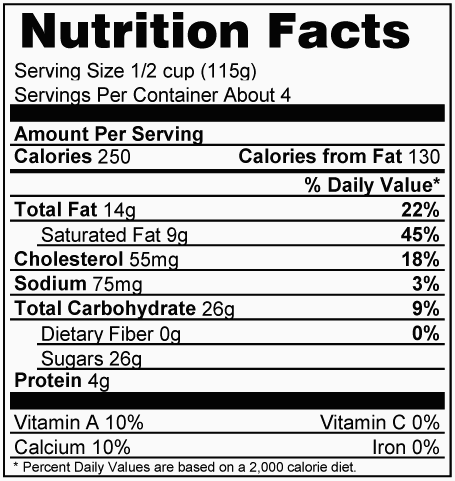 Print Your Own Nutritional Labels with a Digital Color Label Printer
Print Your Own Nutritional Labels with a Digital Color Label Printer
With an increasing number of consumers considering health information in their purchasing decisions, having accurate nutritional label information is mounting in importance. The Food and Drug Administration also has strict regulation on what must be included in the labels, which are subject to change at almost any time. This is why is it important to ensure that your organization is capable of producing high-quality custom printed labels that reflect changing consumer demands and federal regulations.
As competition for the food industry increases every year, having labels that ensure your product meets with optimal consumer perception is critical. Fortunately for producers and manufacturers alike, designing and printing quality, colorful labels is now easier than ever before.
What are nutritional labels?
Nutritional labels contain product-specific information designed to allow the consumer to make better informed choices about their diet. The nutritional label allows them to learn the nutritional value of the product quickly and efficiently, and to help avoid products that might aggravate an existing condition, such as high cholesterol or food allergies.
What is included on a nutritional label?
According to the FDA, the nutritional label must include a serving size, calories (and calories from fat), nutrients (such as vitamins, cholesterol and sodium) and a percentage of daily value. The percentage of daily value is based on 2,000 calorie daily diet, and can help consumers during product comparison.
Serving Size
Serving size is the first piece of information listed on a nutritional label. The FDA standardized serving sizes to make it easier to compare similar foods; they are provided in familiar units, such as cups or pieces, followed by the metric amount, or the number of grams. Consumers can also learn how many servings the product contains, which can speak to the value of the product.
Calories
Calories describe the energy content of the product per serving. For those looking to manage their weight, knowing the amount of calories per serving is critical. This information is listed directly beneath the serving size, alongside the amount of total calories from the fat content of the product.
Nutrients
Nutrients are listed underneath calories in the nutritional label. The nutrients listed first are those that can have negative effects if consumed too much, such as total fat, cholesterol and sodium. According to the FDA, eating too much fat, saturated fat, trans fat, cholesterol, or sodium may increase your risk of certain chronic diseases, like heart disease, some cancers, or high blood pressure.
The nutrients listed beneath these are those that American commonly need more of, such as dietary fiber, vitamin A, vitamin C, calcium, and iron. An adequate intake of these nutrients can reduce the risk of some diseases and conditions. For example, getting enough calcium may reduce the risk of osteoporosis, a condition that results in brittle bones.
Percent Daily Value
The percent daily value helps consumers determine if a serving of food is high or low in a nutrient. The percentage is based off a 2,000 calorie diet, and allows for quick comparison of the nutritional benefits of different products.
According to the FDA, a daily value of 5 percent is low, while a daily value of 20 percent or greater is high. Ideally, consumers should look for a higher percentage of beneficial nutrients, such as calcium and fiber, and lower for nutrients such as fat and cholesterol.
Printing Your Own Nutritional Labels
Fortunately for producers and manufacturers, DuraFast offers a range of nutritional and product label printing solutions for organizations of all sizes. The Epson TM-C3500 Label Printer or Afinia L801 Memjet Color Label Printer can meet the demands of almost any product type, and are both capable of printing in real time with a custom logo and perfect finish.
For those printing couple of hundreds to couple of thousand nutritional labels per month the Epson TM-C3500, Primera LX400, Primera LX900, LX2000, VIPColor VP485 and VP495 will do the job.
Those business that print larger quantities may want to look at the Afinia L801 Memjet label printer, Afinia R635, Primera CX1000 or CX1200, and the Epson TM-C7500.